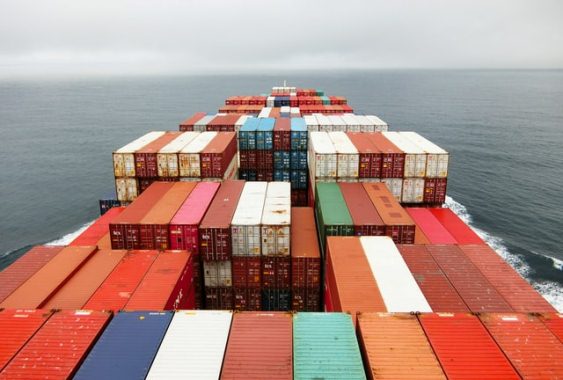
- Closures due to lockdowns in China, the Russia-Ukraine war and upcoming contract negotiations on US West Coast ports are contributing to greater supply chain disorder this year, according to a Container xChange report
- Capacity shortage will persist as port congestion worsens, freight rates shoot up and capacity deteriorates
- Average container prices in China slid 12-18% in the last one month, but should increase in the coming weeks, the report says
Lockdowns in China’s industrial cities, which came just as the global supply chain prepared to recover from the collateral damage caused by COVID-19 this year and companies got ready for the April-July produce shipping season, are weighing down container prices.
Chinese factory closures combined with disruptions caused by the Russian invasion of Ukraine and upcoming contract negotiations on the US West Coast ports are contributing to greater supply chain disorder this year, Container xChange said a press statement.
As a result of the Zero COVID strategy in China, many factories reopen while others further go into shut down, the global container leasing and trading platform said.
This time of year most firms begin to ship fresh production in preparation for the early peak season, Container xChange said. The lockdowns will not just cause a production slowdown, they will also slacken cargo movement, two detrimental effects on the supply chain.
While ports in the United States will not feel the pinch before 3-5 weeks, Container xChange said it expects China-US traffic to get complicated further if the lockdowns persist.
“If [they] persist, the lockdowns will delay container movement significantly at these ports, which will have the maximum impact on US shipments. In the long term, this will create more chaos as rates climb higher, capacity tightens and shipments [get delayed],” said Johannes Schlingmeier, co-founder and chief executive of Container xChange.
He said shippers need to plan their cargo much more in advance in 2022 than last year, given the geopolitical scenario, the US West Coast contract negotiations in July and rail disruptions.
“In the coming months, the transpacific route will witness a major disruption, and shippers must think ahead and prepare for the worst as port congestion worsens, freight rates shoot up and capacity deteriorate,” Schlingmeier advised.
Container prices decline by 12-18% at China ports
In the past one month from February to March, average container prices had slipped 12-18% at the ports of Shenzhen, Qingdao and Ningbo, among other ports.
Going by how the average prices developed last year after the Ningbo port shutdown in July-August 2021, Container xChange said it expects average prices to drop for a few days or weeks as Chinese ports experience restricted exports, while they are still importing.
Once the ports fully resume operations, there will be pressure to deliver more containers, driving up average container prices in the next few months as the industry inches closer to the pre-peak season, Container xChange said. What remains to be seen is whether the prices reach old highs.
So far, the impact on average container prices is limited. As the Shenzhen city officials announce resuming transportation and factory activity after the lockdowns, analysts are positive of the minimum impact this hiccup will have on the overall supply chain.
The platform data of Container xChange shows that the average prices of 40ft high cube (HC) containers at Shenzhen port fell 12.4% from US$5,887 on February 27 to US$5,154 on March 20, and prices for 20ft dry container (DC) fell 18.8% from US$2,800 to US$2,272.
At Ningbo, the average prices for 40ft HC containers slid 15.8% from US$5,930 on February 14 to US$4,990 on March 20. For 20ft DC, prices fell 13.5% from US$2,603 to $2,251 during the period.
At Qingdao, the average price of 40ft HC containers slipped 12% from US$5,420 on February 26 to US$4,748 on March 20. For 20ft DC, prices fell 12.5% from US$2,360 on February 26 to US$2,064 on March 20.




